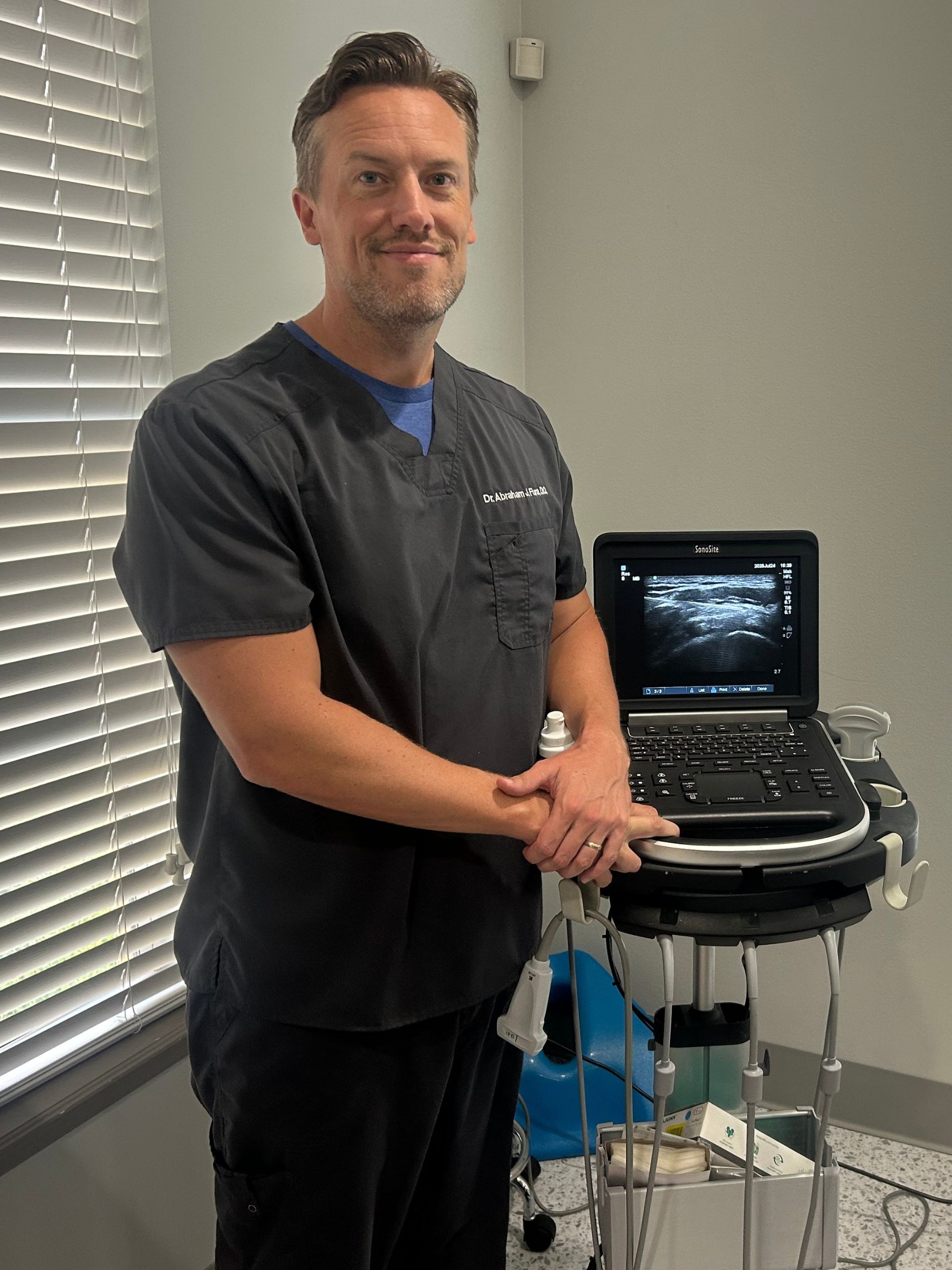
HEEL & FOOT PAIN
Plantar fasciitis is one of the most common causes of heel pain, affecting millions of Americans each year. This condition involves inflammation of the plantar fascia - a thick band of tissue that runs across the bottom of your foot, connecting your heel bone to your toes. The stabbing pain that greets you with your first steps in the morning is the hallmark of this condition. While plantar fasciitis can be stubborn and frustrating, with proper diagnosis and targeted treatment, most patients achieve complete relief and return to their normal activities.

RISK FACTORS
Plantar fasciitis occurs when the plantar fascia experiences too much stress and develops small tears, leading to inflammation and pain. Several factors can contribute to this condition.
Flat feet, high arches, or an abnormal walking pattern can affect weight distribution and put added stress on the plantar fascia. Tight calf muscles also increase tension.
Sudden increases in activity, long-distance running, jumping activities, or prolonged standing on hard surfaces can trigger plantar fasciitis, especially without proper footwear.
Excess weight puts extra stress on the plantar fascia. The condition is most common in people between 40-60 years old as the fascia loses elasticity with age.
Jobs that require prolonged standing or walking on hard surfaces - such as teachers, factory workers, or healthcare professionals - increase the risk of developing plantar fasciitis.

RECOGNIZING THE SIGNS
The pain from plantar fasciitis is distinctive - typically worst with the first steps of the day and improving with movement, only to return after periods of rest.
Sharp, stabbing pain in the heel with the first steps out of bed. The pain typically decreases after a few minutes of walking as the fascia stretches.
Pain returns after sitting for long periods or any time the foot has been at rest. Standing up triggers the sharp pain again until the fascia loosens.
The heel may develop a burning sensation or deep ache that extends along the arch of the foot, especially after prolonged standing or activity.
Pain worsens with activities like climbing stairs, standing on tiptoes, or after intense exercise. The pain is usually worse after, not during, activity.
The bottom of the heel is tender to touch, especially near the heel bone. The foot may feel stiff and tight, particularly in the arch area.
Some people experience mild swelling in the heel area. The affected foot may also feel warm to the touch due to inflammation.
Don't let heel pain keep you from the activities you love. If you're experiencing stabbing pain with your first morning steps or persistent heel discomfort throughout the day, we can help. Our advanced treatments for plantar fasciitis provide fast relief and long-lasting results. Schedule your consultation today and get back on your feet comfortably.